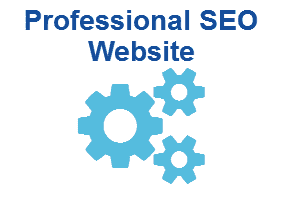Fast website and SEO
How to be found on the web through Search Engine Optimization (SEO) is a huge topic. Already on our homepage, webdee-seoservice.com, we talk a lot about SEO.
Here on this page, we will be more technical about what we specifically do, which settings we apply to our SEO web design, and what results we can realistically achieve.
Besides thousands of suggestions and tricks that you can read on the internet about SEO, we focus more on a few important points.
- 📚 Contents and focus on particular content
- 👌 Easiness of use
- ⚡ Speed (load time)
- 📲 Adaptability on any device
- 🗺 Local SEO
- 🔍 Google, Bing and Yandex sign up
- 😌 Look and Feel
- 🔒 Secure the website
1. 📚 Contents and focus on particular content
Keywords, title tags, meta descriptions, images with title and ALT-text, infographics, anchor text with title, single H1 tag for each page, evergreen content, original long-form content, external links to informative websites.
Enhance content with infographics, illustrations, images, or videos to maintain user engagement. Videos should only play after a click, never automatically.
Highlight your existing content. Many enterprises have untapped resources that can significantly boost authority and ranking.
Provide clearly marked internal links (typically in blue) to aid navigation. The website design should ensure users can quickly grasp: “what you do”, “where you are”, “what it costs”. Secondary details can include “how you do”, “your timing”, and additional information.
The language should be conversational rather than journalistic. It's crucial to include questions and answers in descriptions like: “how to use?”, “How to maintain?”, “How to assemble?”, “How to buy?”
Include a search box that automatically suggests terms as users type.
2. 👌 Ease of use
Emphasize the above-the-fold area. Our SEO web design architecture will display all possible links rather than complex submenus (what visitors don’t see, search engines won’t either). Focus on highlighting information rather than slogans to help visitors quickly understand what you offer.
Ensure essential links are accessible: home, contacts, products/services, pricing. For ecommerce, include links to ecommerce sections or specific product pages.
Design the website for usability without requiring zooming. Use white spaces (paragraph and line spacing) to allow quick scanning on smartphones. Bold characters can serve as visual cues.
3. ⚡ Speed (load time)
Optimize images with thumbnails that expand on click, robust HTML/PHP structure with minimal database use, full functionality on slow internet, minified CSS on pages, minimal JavaScript.
Replace “like” and other social buttons with simple links. Avoid using ecommerce platforms directly as main sites; instead, link to product pages using a faster web design platform.
Use common fonts, deferred loading icons, and HTML character entities such as 😀 (this is not an image, but a character).
4. 📲 Adaptability on any device
Ensure mobile-friendly and desktop-friendly design with a single version for all screens.
Maintain consistent font sizes across all pages for easy navigation. Clearly visible page titles above the fold help visitors understand their location without scrolling. Ensure the logo is clickable for easy return to the homepage. Use a prominent image on each page as a visual reminder for returning visitors.
5. 🗺 Local SEO
Include NAP (Name, Address, Phone number) and customer reviews linked on the contact page with an embedded Google map (Google My Business). Encourage citations on social networks.
6. 🔍 Google, Bing, and other search engines
Completing the signup process for these platforms enhances local and overall SEO. Presence on one search engine can influence others.
7. 😌 Look and Feel
The look and feel of a website convey information and interaction between users and site owners. It includes graphical elements like colors, shapes, icons, images, layout, fonts, font sizes, background colors, buttons, boxes, and menus.
Design for responsiveness across all devices and browsers. Complex logos or graphics may become incomprehensible on smaller screens. Ensure menus and elements are mobile-friendly.
8. 🔒 Secure the website
Implement SSL certificates, use updated systems, avoid unnecessary databases and plugins, and limit CMS access via FTP.



